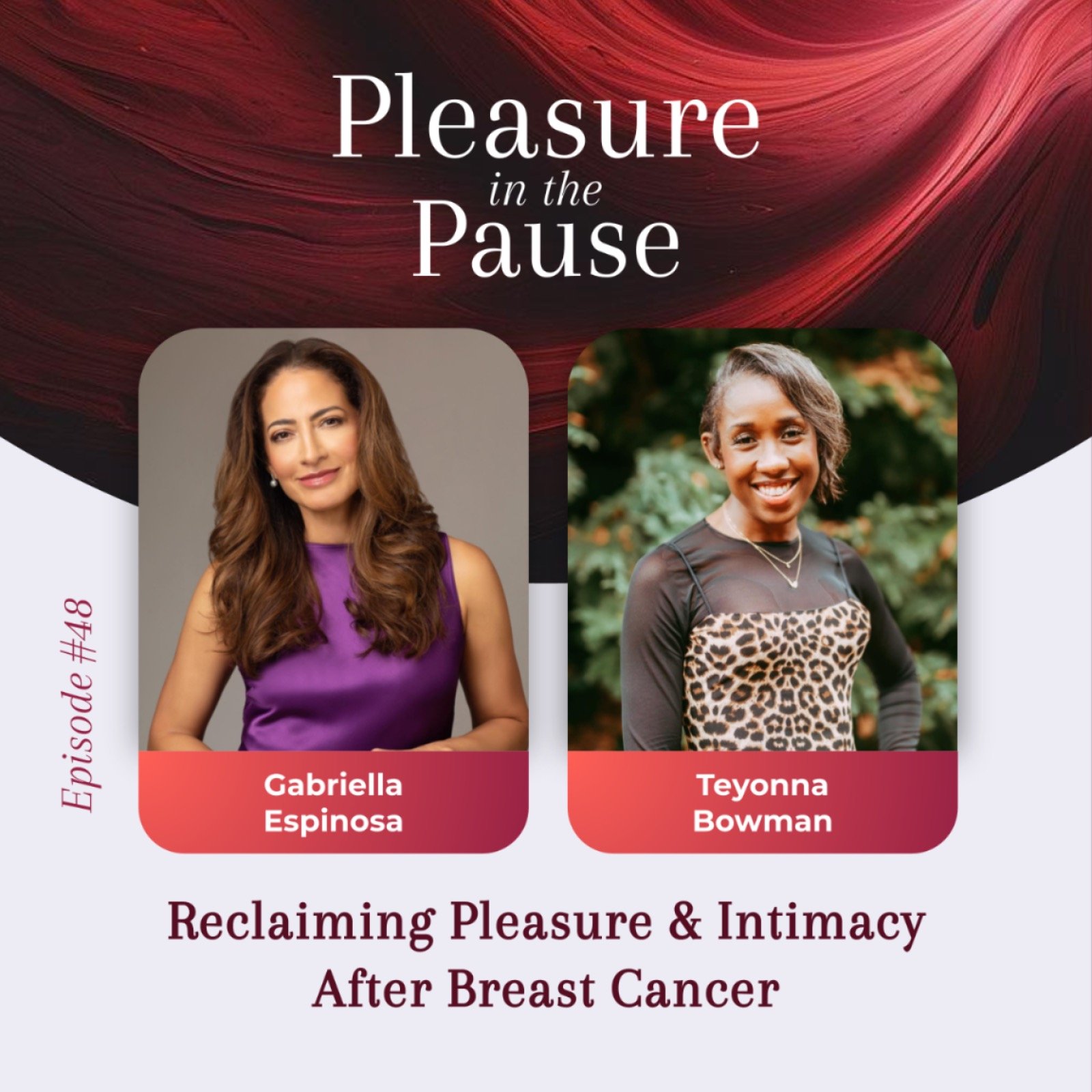
Helping breast cancer survivors navigate menopause with clarity, compassion, and community.
Quick Intro
Hey! I’m Teyonna. As a 2x breast cancer survivor, I’ve become passionate in supporting women—especially the growing number of younger breast cancer survivors—with resources and education about medically induced menopause.
I created this platform, Pausitive Outlook, to share my own journey and amplify the often-unspoken realities of survivorship and advocate for better quality of life AFTER treatment—because thankfully early detection tools are improving and survival outcomes for breast cancer (excluding MBC diagnoses) are rising.
But there’s a gap in understanding what resources are available to support the survivorship journey, from both a patient standpoint AND a medical professional standpoint (I use lots of CAPS and !!—I’m a Millenial).
So, whether I’m sharing my story, leading events and conversations, driving advocacy, or co-creating resources, my goal is to ensure every woman feels seen, supported and empowered to make better decisions about her quality of life. I hope this website provides helpful tools to support your own journey or that of a loved one (sharing is caring!).
what to expect from this site
Pausitive Outlook offers a starting place for survivors who want trusted, relatable, and medically sound support on what to expect, who to talk to, and how to advocate for your post-treatment care.
Medically induced menopause after breast cancer isn’t talked about enough. Many survivors (especially me) leave treatment feeling unprepared for the emotional, physical, and hormonal changes that come next. I was unsure of what to do after my consistent appointments came to an end, but my side effects were ramping up.
I’m sharing resources, communities, and products that helped me bridge the gap between ringing the end of treatment bell and starting my new “menopause normal,” and hope you find comfort in this space.
-
What's Medically Induced Menopause?
Perimenopause usually starts in your mid 40s to 50s as a natural part of aging, with the average age of menopause being 51. But if you’ve been diagnosed with breast cancer, it’s important to know that some treatments can bring on menopause early and suddenly (called induced menopause).
-
Some Tips for After Treatment Ends.
Ringing the end of treatment bell is one of the greatest gifts—but it’s far from the end of the cancer journey. Click here for my favorite products that help support the immediate and ongoing changes of medically induced menopause. There may even be a discount code for you—or to support a friend going through it!
-
How to Advocate for the Care You Deserve.
Remember the godsend of Nurse Navigators after being diagnosed? Well, not every institution provides the same support after hands on treatment ends. Find out how to put the pieces together and advocate for the best quality of life along the way.
-
Recommended Resources and Telehealth Providers.
Check out our vetted partners and platforms providing support for survivors, previvors and thrivers. We’re always updating our list—if you’ve had a great experience with a provider, let us know!
-
Join the Community!
Want more survivor-centered menopause resources? Click here to learn about local and national programming, newsletter updates and announcements about Second Bloom events.
-
Sharing my journey
A cancer diagnosis can connect us with an invisible ribbon. Hearing those words or being impacted by a family member’s diagnosis can shift the way we experience and move through the world. While there are commonalties, everyone’s experiences are different. Click here to visit Teyonna’s blog.
Breast Cancer & menopause by the Numbers
Approximately 1 in 8 women (13%) in the U.S. will develop invasive breast cancer at some point in their life
•
About 16% of women with breast cancer are younger than 50 years of age
•
The average age of menopause in the U.S. is 51
•
The median age at the time of breast cancer diagnosis is 62
•
About 5% to 10% of breast cancers can be linked to known inherited gene mutations
•
About 85% of breast cancers occur in women who have no family history of breast cancer.
•
Breast cancer incidences are up 1% with the highest increases in women younger than 50 years old (1.4% per year) and Hispanic (1.6% per year) or Asian American and Pacific Islander (2.6% per year)
•
Premature menopause is menopause that occurs before age 40
•
Surgical or induced menopause is caused by removal of both ovaries or damage to both ovaries by chemo or radiation
•
Black women have a roughly 40 percent higher death rate from breast cancer. Among women under 50, the disparity is even greater
•
Approximately 1 in 8 women (13%) in the U.S. will develop invasive breast cancer at some point in their life • About 16% of women with breast cancer are younger than 50 years of age • The average age of menopause in the U.S. is 51 • The median age at the time of breast cancer diagnosis is 62 • About 5% to 10% of breast cancers can be linked to known inherited gene mutations • About 85% of breast cancers occur in women who have no family history of breast cancer. • Breast cancer incidences are up 1% with the highest increases in women younger than 50 years old (1.4% per year) and Hispanic (1.6% per year) or Asian American and Pacific Islander (2.6% per year) • Premature menopause is menopause that occurs before age 40 • Surgical or induced menopause is caused by removal of both ovaries or damage to both ovaries by chemo or radiation • Black women have a roughly 40 percent higher death rate from breast cancer. Among women under 50, the disparity is even greater •
advocacy partners
podcast features











